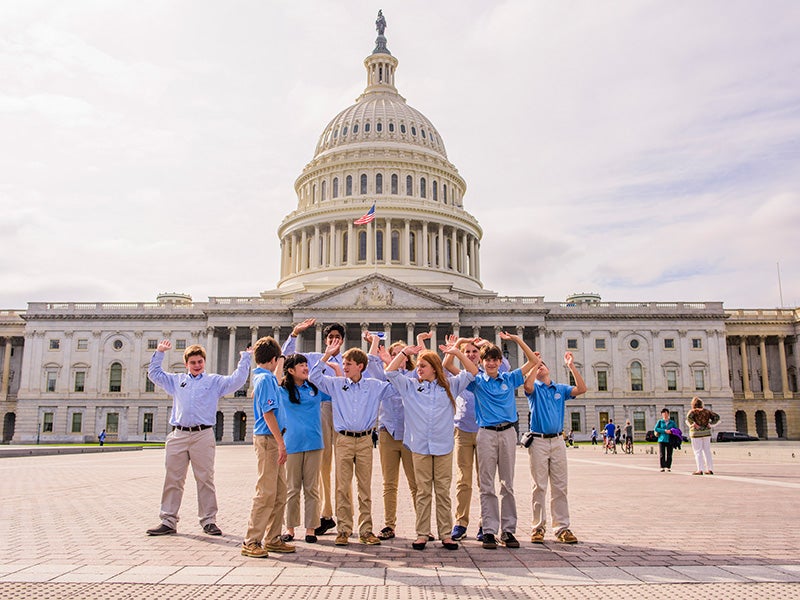Media Inquiries
Tylar Greene
Public Affairs and Communications Strategist
tgreene@earthjustice.org
Legal Assistance Inquiries
Contacto de Prensa
Robert Valencia
Estratega de Comunicaciones y Asuntos Públicos Hispanos/Latinos
rvalencia@earthjustice.org
Earthjustice’s Toxic Exposure & Health Program uses the power of the law to ensure that all people have safe workplaces, neighborhoods, and schools; have access to safe drinking water and food; live in homes that are free of hazardous chemicals; and have access to safe products. We work to ensure that regulators acknowledge and redress the inequitable burdens imposed on fenceline communities and communities of color — by the manufacturing, use, and disposal of toxic chemicals. We work in partnership with community groups, labor unions, and environmental and public health organizations across the country.
Our Impact
Strengthening Government Oversight
We’re pushing for bans or significant restrictions on chemicals that are harming communities and the planet, including petrochemicals, PFAS, and phthalates.
We fought for a badly needed upgrade to the Toxic Substances Control Act (“TSCA”), and we are now in courts across the country to ensure the U.S. Environmental Protection Agency (“EPA”) follows the revised law and protects fenceline communities, other highly exposed populations such as workers and tribal communities, and vulnerable populations such as children from harmful exposure to toxic chemicals.
Highlights of our work include:
- We fought for the 2016 upgrade to the Toxic Substances Control Act, with stronger requirements for chemical safety reviews, testing, and health protections. The law now requires the EPA to conduct risk evaluations of chemicals people are exposed to in everyday products, drinking water, and air pollution — many of which have never been tested for safety.
- We push EPA to ensure that its actions comprehensively consider and protect against chemical risks. We get involved at multiple stages of the rulemaking process, including petitioning EPA to take action on dangerous chemicals and submitting technical comments on ways to improve proposed rules. We successfully advocated for whole or partial bans of chemicals that are known to cause cancer and other severe health effects, including trichloroethylene (“TCE”) and methylene chloride.
- We go to court to make sure EPA complies with TSCA’s obligation to consider all of the ways that people are exposed to harmful chemicals — instead of picking some of a chemical’s uses to evaluate while ignoring others. In 2019, as a result of one of our lawsuits, a federal appellate court ruled that the EPA must consider the risks from past uses of toxic chemicals such as asbestos. And when EPA issues risk management rules that leave communities and the environment at risk of harm, we go to court to challenge those rules too.
- We work to stop new toxic chemicals entering the marketplace. We engaged in administrative advocacy and litigation to oppose the approval of harmful new PFAS and petrochemicals. And we sued EPA over its lack of transparency in its new chemicals program, to ensure that the public has access to all the health and safety information they are entitled to by law in a timely manner.
- We are pushing back on risky proposals to produce fuels and other chemicals from toxic plastic waste. In 2023, we sued EPA for issuing an order approving the production of fuel chemicals derived from plastic waste near a residential area of Pascagoula, Mississippi, despite finding that the chemicals pose cancer risks hundreds of thousands of times higher than the level EPA consistently has found unacceptable. EPA subsequently withdrew the challenged order.
Stopping Contamination From “Forever Chemicals”
We’re continuing our efforts to crack down on PFAS — a class of thousands of toxic chemicals that don’t break down and can remain in drinking water and our bodies for decades.
More than 200 million people across the country are likely exposed to food and drinking water contaminated with PFAS, which have been linked to serious medical problems, even at very low levels of exposure.
Highlights of our work include:
- We went to court to defend EPA’s 2024 rule designating two PFAS as hazardous substances under the federal Superfund law, promoting the remediation of PFAS contaminated sites.
- We went to court to defend EPA’s 2024 rule establishing the first nationwide limits on PFAS in drinking water on behalf of communities across the country who have experienced severe contamination of their drinking water supplies with PFAS.
- We successfully petitioned EPA to start the process to regulate toxic PFAS that leach from plastic containers into household products. Each year, more than 100 million plastic containers are treated with a process that creates multiple PFAS, contaminating the products stored in those containers and exposing people and the environment to these toxic chemicals. EPA is now obligated to take action to address these risks.
- We successfully sued the Department of Defense (“DOD”) to cancel contracts for the incineration of millions of gallons of PFAS-containing firefighting foam. The DOD is the nation’s largest user of firefighting foam containing PFAS, and incineration can result in emissions of PFAS and other toxic chemicals such as hydrogen fluoride, which is poisonous, corrosive, and flammable.
- We successfully sued EPA to close a loophole that allowed industry to avoid disclosing their releases of PFAS to the environment. Communities now have better information about the toxic PFAS that are being manufactured, used, or released in their neighborhoods.
- Earthjustice is working with a coalition of state-based organizations to adopt strong state-level regulations of PFAS. As part of this work we advocated for legislation that bans the use of PFAS in menstrual products sold in New York, which passed both houses of the legislature in April 2025.
Reducing Exposures to Lead
We’ll keep fighting to ensure the government protects people and the environment from exposure to lead — a toxic chemical that harms people even at extremely low levels.
Highlights of our work include:
- We have gone to court multiple times to demand stronger federal standards to protect children from dangerous exposure to lead. The Centers for Disease Control recognizes that there is no safe level of lead exposure for children, and about half a million children in the U.S. have levels of lead in their blood high enough to qualify as lead poisoning.
- In 2017, we won a court order that required EPA to issue updated clean-up and disclosure standards for lead dust in homes and childcare centers. In June 2019, the Trump administration issued new standards to comply with that order, but those were woefully flawed and too lax to protect families. So, we sued EPA again — and won again. As a result, in 2024, the Biden administration adopted dust-lead standards that will better protect people nationwide from lead in homes and childcare facilities.
- Building off of decades of advocacy, we successfully petitioned EPA to issue a finding that lead in aviation gasoline contributes to harmful lead pollution. As a result of this 2023 endangerment finding, EPA must now adopt emissions standards for lead pollution from piston-engine aircraft that use this leaded “avgas.”
Keeping Toxic Chemicals Out of Consumer Products and Food
We’re working to ensure that consumer products and the food we eat are free from toxic chemicals.
Highlights of our work include:
- We are challenging the U.S. Food and Drug Administration (“FDA”)’s regulations that allow companies to use toxic phthalates — a class of endocrine-disrupting chemicals — in food processing and food packaging materials. Phthalates leach from these materials and contaminate our food.
- We are suing EPA to close illegal loopholes in its rules that perpetuate exposure to decaBDE, a toxic flame retardant that has been found in consumer products made with recycled black plastic.
- We successfully petitioned EPA on behalf of three Tribal Nations to regulate the tire additive 6PPD under the Toxic Substances Control Act. 6PPD, which is added to virtually every vehicle tire, degrades during normal tire use into 6PPD-quinone or “6PPD-Q,” which is extremely toxic to aquatic life and kills up 100% of coho salmon returning to spawn in urban watersheds. EPA is now obligated to ban or restrict the use of 6PPD in tires to eliminate this unreasonable risk to the environment.




